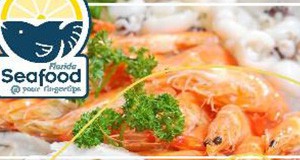Over the past few years, consumers have begun to pay more attention to the nutritional benefits, sustainability, and environment impact of consuming seafood. However, media coverage of these concerns may leave consumers confused and uncertain about how they should incorporate seafood into their diets. In 2013, a survey was conducted to better understand Florida seafood consumer preferences, perceptions, and concerns. This 4-page fact sheet explains the survey’s findings and how they might help Extension deliver effective seafood-based education to Florida residents. Written by Lisa Krimsky, Charles Adams, and Bryan Fluech, and published by the UF Department of Food and Resource Economics, May 2015. http://edis.ifas.ufl.edu/fe965
Category: Health & Nutrition
Health Benefits and Medicinal Value of Honey
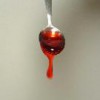 Honey has been used for medicinal purposes for thousands of years. It is rich in sugars such as glucose and fructose, but it also contains small amounts of vitamins, minerals, amino acids, and antioxidants such as phenolic acids and flavonoids. These nutrients help to make honey a unique, natural health product. Its market niche as a health product is growing, and current research supports the potential of honey as a medicinal product. This 3-page fact sheet describes health aspects of honey deriving from the floral source and color, beneficial compounds, anti-microbial properties and anti-inflammatory properties. Written by Sara Marshall, Liwei Gu, and Keith R. Schneider, and published by the UF Department of Food Science and Human Nutrition, April 2015.
Honey has been used for medicinal purposes for thousands of years. It is rich in sugars such as glucose and fructose, but it also contains small amounts of vitamins, minerals, amino acids, and antioxidants such as phenolic acids and flavonoids. These nutrients help to make honey a unique, natural health product. Its market niche as a health product is growing, and current research supports the potential of honey as a medicinal product. This 3-page fact sheet describes health aspects of honey deriving from the floral source and color, beneficial compounds, anti-microbial properties and anti-inflammatory properties. Written by Sara Marshall, Liwei Gu, and Keith R. Schneider, and published by the UF Department of Food Science and Human Nutrition, April 2015.
http://edis.ifas.ufl.edu/fs267
Breast Cancer: Neoadjuvant Chemotherapy
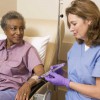 Neoadjuvant, or preoperative, chemotherapy is the use of chemotherapy to treat breast cancer before surgery. If your doctors have suggested that you consider this treatment, you probably have questions about it. This 4-page fact sheet provides an overview of chemotherapy treatment, potential side effects, and major benefits. Written by Barbara F. Shea and Martha C. Monroe, and published by the UF Department of Family Youth and Community Sciences, April 2015. (Photo: iStock/Thinkstock.com)
Neoadjuvant, or preoperative, chemotherapy is the use of chemotherapy to treat breast cancer before surgery. If your doctors have suggested that you consider this treatment, you probably have questions about it. This 4-page fact sheet provides an overview of chemotherapy treatment, potential side effects, and major benefits. Written by Barbara F. Shea and Martha C. Monroe, and published by the UF Department of Family Youth and Community Sciences, April 2015. (Photo: iStock/Thinkstock.com)
http://edis.ifas.ufl.edu/fy897
Contaminants in the Urban Environment: Perfluoroalkyl Substances
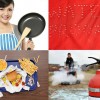 Perfluoroalkyl substances (PFASs) or perfluorochemicals (PFCs) are the most widespread and persistent manmade chemicals on earth. Common products that contain PFASs are Teflon pans, non-stick cookware, rain/waterproof jackets (like Gore-Tex), fire-fighting foams, food packaging, carpets, and furniture fabrics. PFASs stay in the environment for a long period of time, which means they can accumulate in organisms to levels that cause harmful effects. This 9-page fact sheet discusses the occurrence, use, exposure, and potential harmful effects of PFASs to humans and the environment, and suggests ways to reduce your exposure to PFSAs. Written by Ignacio A. Rodriguez-Jorquera and Gurpal S. Toor, and published by the UF Department of Soil and Water Science, March 2015. (Photos: Thinkstock.com)
Perfluoroalkyl substances (PFASs) or perfluorochemicals (PFCs) are the most widespread and persistent manmade chemicals on earth. Common products that contain PFASs are Teflon pans, non-stick cookware, rain/waterproof jackets (like Gore-Tex), fire-fighting foams, food packaging, carpets, and furniture fabrics. PFASs stay in the environment for a long period of time, which means they can accumulate in organisms to levels that cause harmful effects. This 9-page fact sheet discusses the occurrence, use, exposure, and potential harmful effects of PFASs to humans and the environment, and suggests ways to reduce your exposure to PFSAs. Written by Ignacio A. Rodriguez-Jorquera and Gurpal S. Toor, and published by the UF Department of Soil and Water Science, March 2015. (Photos: Thinkstock.com)
http://edis.ifas.ufl.edu/ss631
Women's Nutrition: Folate/Folic Acid
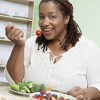 To decrease a baby’s chances of having certain types of births defects, mothers need to have already been consuming enough of the vitamin called folate, or folic acid, before they become pregnant. This article provides information about the folate/folic acid needs of women who are capable of becoming pregnant, including its role in preventing birth defects, sources, and strategies for meeting the recommended intake. This 4-page fact sheet was written by Caroline Dunn and Gail Kauwell, and published by the UF Department of Food Science and Human Nutrition, February 2015. (Photo Credit: Mike Watson Images/moodboard/Thinkstock.com)
To decrease a baby’s chances of having certain types of births defects, mothers need to have already been consuming enough of the vitamin called folate, or folic acid, before they become pregnant. This article provides information about the folate/folic acid needs of women who are capable of becoming pregnant, including its role in preventing birth defects, sources, and strategies for meeting the recommended intake. This 4-page fact sheet was written by Caroline Dunn and Gail Kauwell, and published by the UF Department of Food Science and Human Nutrition, February 2015. (Photo Credit: Mike Watson Images/moodboard/Thinkstock.com)
http://edis.ifas.ufl.edu/fs265
Vida Saludable: Examinando el nivel de glucosa en la sangre
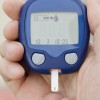 Examinar el nivel de glucosa en su sangre es una parte importante en el manejo de la diabetes. El conocer los valores de glucosa en su sangre le indica que tan eficiente está funcionando su plan de cuidado y si debe hacer algún cambio. ¡Continúe leyendo para aprender más!
Examinar el nivel de glucosa en su sangre es una parte importante en el manejo de la diabetes. El conocer los valores de glucosa en su sangre le indica que tan eficiente está funcionando su plan de cuidado y si debe hacer algún cambio. ¡Continúe leyendo para aprender más!
This 4-page fact sheet is the Spanish language version of Healthy Living: Checking Blood Glucose. Written by Jennifer Hillan and Linda B. Bobroff, and published by the UF Department of Family Youth and Community Sciences, January 2015. (Photo: iStock/Thinkstock.com)
http://edis.ifas.ufl.edu/fy908
Healthy Eating: Nutrition and Diabetes
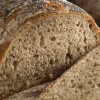 A healthy diet, along with exercise and medication, can help control diabetes and reduce the risk of complications. A healthy lifestyle also helps reduce the chances of developing diabetes for those who are at high risk. For a healthy diet, follow these tips. This 3-page fact sheet was written by Linda B. Bobroff, Jennifer Hillan, and Emily Minton, and published by the UF Department of Family Youth and Community Sciences, February 2015. (Photo:iStock/Thinkstock.com)
A healthy diet, along with exercise and medication, can help control diabetes and reduce the risk of complications. A healthy lifestyle also helps reduce the chances of developing diabetes for those who are at high risk. For a healthy diet, follow these tips. This 3-page fact sheet was written by Linda B. Bobroff, Jennifer Hillan, and Emily Minton, and published by the UF Department of Family Youth and Community Sciences, February 2015. (Photo:iStock/Thinkstock.com)
http://edis.ifas.ufl.edu/fy685
Alimentacion Saludable: Nutricion y diabetes
 Una dieta saludable, junto con ejercicio y medicinas, pueden ayudar a controlar la diabetes y reducir el riesgo de complicaciones. Un estilo de vida saludable también ayuda a personas con alto riesgo de diabetes a reducir las probabilidades de padecer de esta enfermedad. Para una dieta saludable, siga estos consejos. This 3-page fact sheet was written by Linda B. Bobroff, Jennifer Hillan, y Emily Minton, and published by the UF Department of Family Youth and Community Sciences, February 2015.
Una dieta saludable, junto con ejercicio y medicinas, pueden ayudar a controlar la diabetes y reducir el riesgo de complicaciones. Un estilo de vida saludable también ayuda a personas con alto riesgo de diabetes a reducir las probabilidades de padecer de esta enfermedad. Para una dieta saludable, siga estos consejos. This 3-page fact sheet was written by Linda B. Bobroff, Jennifer Hillan, y Emily Minton, and published by the UF Department of Family Youth and Community Sciences, February 2015.
http://edis.ifas.ufl.edu/fy665
De compras para la salud: Comidas para una persona
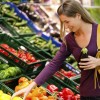 En el mundo ajetreado de hoy, muchos estadounidenses se encuentran cocinando para ellos mismos. Los adultos mayores y estudiantes universitarios por igual, se enfrentan al desafío de preparar la comida como una prioridad, cuando nadie más se encarga de ellos para crear una comida balanceada. Ya sea que usted coloque una comida en el microondas después de un día muy ocupado, o pase tiempo cocinando una comida especial para usted, comprar y preparar comidas saludables para uno mismo a bajo costo puede ser agradable, simplemente con un poco de planificación. This 5-page fact sheet is the Spanish language version of FSHN13-02/FS224: Shopping for Health: A Menu for One. It was written by Morgan Denhard and Wendy Dahl, and published by the UF Department of Food Science and Human Nutrition, February 2015. (Photo: Thinkstock.com)
En el mundo ajetreado de hoy, muchos estadounidenses se encuentran cocinando para ellos mismos. Los adultos mayores y estudiantes universitarios por igual, se enfrentan al desafío de preparar la comida como una prioridad, cuando nadie más se encarga de ellos para crear una comida balanceada. Ya sea que usted coloque una comida en el microondas después de un día muy ocupado, o pase tiempo cocinando una comida especial para usted, comprar y preparar comidas saludables para uno mismo a bajo costo puede ser agradable, simplemente con un poco de planificación. This 5-page fact sheet is the Spanish language version of FSHN13-02/FS224: Shopping for Health: A Menu for One. It was written by Morgan Denhard and Wendy Dahl, and published by the UF Department of Food Science and Human Nutrition, February 2015. (Photo: Thinkstock.com)
http://edis.ifas.ufl.edu/fs266
Datos sobre el potasio
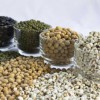 El potasio es un mineral que se encuentra dentro de las células del cuerpo. Es uno de algunos minerales conocidos como electrolitos. Estos minerales (potasio, sodio y cloro) se encuentran en los fluidos dentro y fuera de las células del cuerpo. This 2-page fact sheet is the Spanish language version of Facts about Potassium written by R. Elaine Turner and Linda B. Bobroff, and published by the UF Department of Family Youth and Community Sciences, February 2015.
El potasio es un mineral que se encuentra dentro de las células del cuerpo. Es uno de algunos minerales conocidos como electrolitos. Estos minerales (potasio, sodio y cloro) se encuentran en los fluidos dentro y fuera de las células del cuerpo. This 2-page fact sheet is the Spanish language version of Facts about Potassium written by R. Elaine Turner and Linda B. Bobroff, and published by the UF Department of Family Youth and Community Sciences, February 2015.
http://edis.ifas.ufl.edu/fy1214
De compras para la salud: Las hierbas y las especias
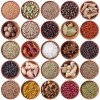 Las hierbas y las especias han sido usadas durante cientos de años en la cocina y en la medicina. Estas añaden una amplia gama de sabores a los alimentos y también pueden proporcionar beneficios para salud. Para algunas personas, el uso de hierbas y de especias en la cocina puede ser un reto—¡pero no tiene qué ser así! La siguiente información le permitirá estar en un buen camino para disfrutar de una sazón sabrosa y saludable.This 4-page fact sheet is the Spanish language version of Shopping for Health: Herbs and Spices, written by Jenna A. Norris and Wendy J. Dahl, and published by the UF Department of Food Science and Human Nutrition, January 2015.
Las hierbas y las especias han sido usadas durante cientos de años en la cocina y en la medicina. Estas añaden una amplia gama de sabores a los alimentos y también pueden proporcionar beneficios para salud. Para algunas personas, el uso de hierbas y de especias en la cocina puede ser un reto—¡pero no tiene qué ser así! La siguiente información le permitirá estar en un buen camino para disfrutar de una sazón sabrosa y saludable.This 4-page fact sheet is the Spanish language version of Shopping for Health: Herbs and Spices, written by Jenna A. Norris and Wendy J. Dahl, and published by the UF Department of Food Science and Human Nutrition, January 2015.
http://edis.ifas.ufl.edu/fs264
De compras para la salud: Las frutas
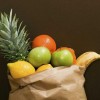 Las frutas tienen un buen sabor y son buenas para usted. Algunas frutas son muy ricas en nutrientes. Es decir, contienen muchas vitaminas, minerales, antioxidantes y fibra que su cuerpo necesita para estar saludable. Ya sea que le gusten las frutas frescas o los jugos de fruta, las frutas congeladas o enlatadas, es importante escoger una variedad diferente cada día. Algunos consejos para ayudarle antes durante y después de ir a comprar frutas.This 4-page fact sheet is the Spanish language version of Shopping for Health: Fruit, written by Ashley R. Kendall y Wendy J. Dahl, and published by the UF Department of Food Science and Human Nutrition, January 2015.
Las frutas tienen un buen sabor y son buenas para usted. Algunas frutas son muy ricas en nutrientes. Es decir, contienen muchas vitaminas, minerales, antioxidantes y fibra que su cuerpo necesita para estar saludable. Ya sea que le gusten las frutas frescas o los jugos de fruta, las frutas congeladas o enlatadas, es importante escoger una variedad diferente cada día. Algunos consejos para ayudarle antes durante y después de ir a comprar frutas.This 4-page fact sheet is the Spanish language version of Shopping for Health: Fruit, written by Ashley R. Kendall y Wendy J. Dahl, and published by the UF Department of Food Science and Human Nutrition, January 2015.
http://edis.ifas.ufl.edu/fs263
Healthy Living: Checking Blood Glucose
 Checking your blood glucose levels is an important part of managing diabetes. Your blood glucose values let you know how well your care plan is working and if you need to make any changes. This 3-page fact sheet was written by Jennifer Hillan and Linda B. Bobroff, and published by the UF Department of Family Youth and Community Sciences, February 2015.(Photo iStock/Thinkstock.com)
Checking your blood glucose levels is an important part of managing diabetes. Your blood glucose values let you know how well your care plan is working and if you need to make any changes. This 3-page fact sheet was written by Jennifer Hillan and Linda B. Bobroff, and published by the UF Department of Family Youth and Community Sciences, February 2015.(Photo iStock/Thinkstock.com)
http://edis.ifas.ufl.edu/fy868
Shopping for Health: Snack Foods
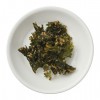 At first glance, you might think that snacking should be avoided because of the extra calories they can add to your diet. However, studies have shown there may be benefits when healthy snack choices are made. Read this 4-page fact sheet to learn about the benefits of healthy snacks and to learn healthy snack shopping tips. Includes recipes for homemade crispy kale chips and peanut butter and jelly yogurt. Written by Carley Rusch and Wendy J. Dahl, and published by the UF Department of Food Science and Human Nutrition, January 2015. (Photo: iStock/Thinkstock.com)
At first glance, you might think that snacking should be avoided because of the extra calories they can add to your diet. However, studies have shown there may be benefits when healthy snack choices are made. Read this 4-page fact sheet to learn about the benefits of healthy snacks and to learn healthy snack shopping tips. Includes recipes for homemade crispy kale chips and peanut butter and jelly yogurt. Written by Carley Rusch and Wendy J. Dahl, and published by the UF Department of Food Science and Human Nutrition, January 2015. (Photo: iStock/Thinkstock.com)
http://edis.ifas.ufl.edu/fs262
Shopping for Health: Seafood
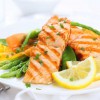 Seafood is part of the protein foods group of MyPlate and also provides other nutrients needed for good health. Because of the many health benefits, adults should consume at least eight ounces of a variety of seafood every week. Still, it is important to consider your budget when shopping for seafood. This 4-page fact sheet explains the health benefits of seafood and offers some money-saving strategies for making seafood more affordable. Written by Michelle Brown and Wendy J. Dahl, and published by the UF Department of Food Science and Human Nutrition, April 2014. (Photo: Elena Gaak/iStock/Thinkstock)
Seafood is part of the protein foods group of MyPlate and also provides other nutrients needed for good health. Because of the many health benefits, adults should consume at least eight ounces of a variety of seafood every week. Still, it is important to consider your budget when shopping for seafood. This 4-page fact sheet explains the health benefits of seafood and offers some money-saving strategies for making seafood more affordable. Written by Michelle Brown and Wendy J. Dahl, and published by the UF Department of Food Science and Human Nutrition, April 2014. (Photo: Elena Gaak/iStock/Thinkstock)
http://edis.ifas.ufl.edu/fs247
Facts about Protein
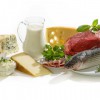 There are many sources of dietary protein. This 3-page fact sheet covers protein basics, the role of proteins in the body, recommended intake, sources of protein and how to make healthier choices. Written by Nicole C. Agro and Wendy J. Dahl, and published by the UF Department of Food Science and Human Nutrition, January 2015.
There are many sources of dietary protein. This 3-page fact sheet covers protein basics, the role of proteins in the body, recommended intake, sources of protein and how to make healthier choices. Written by Nicole C. Agro and Wendy J. Dahl, and published by the UF Department of Food Science and Human Nutrition, January 2015.
http://edis.ifas.ufl.edu/fs261
Facts about Farm to School
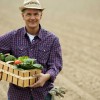 Farm to school is a nationwide program that improves the supply of fresh, local produce to schools by building relationships between local farmers and schools. Over the past 20 years, school districts in all 50 states have joined the F2S program and are purchasing items from local farmers. Recent requirements for more fruit and vegetables in the National School Lunch Programs have made the F2S program more popular than ever. The University of Florida is committed to the Farm to School program and is working closely with the Florida Department of Agriculture and Consumer Services to connect farmers to schools. This 3-page fact sheet was written by Samantha Ward, Lauren Headrick, and Karla Shelnutt, and published by the UF Department of Family Youth and Community Sciences, December 2014. (Photo: iStock/Thinkstock.com)
Farm to school is a nationwide program that improves the supply of fresh, local produce to schools by building relationships between local farmers and schools. Over the past 20 years, school districts in all 50 states have joined the F2S program and are purchasing items from local farmers. Recent requirements for more fruit and vegetables in the National School Lunch Programs have made the F2S program more popular than ever. The University of Florida is committed to the Farm to School program and is working closely with the Florida Department of Agriculture and Consumer Services to connect farmers to schools. This 3-page fact sheet was written by Samantha Ward, Lauren Headrick, and Karla Shelnutt, and published by the UF Department of Family Youth and Community Sciences, December 2014. (Photo: iStock/Thinkstock.com)
http://edis.ifas.ufl.edu/fy1450
Prueba de la cuchara para alimentos en pure
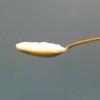 Los alimentos en puré preparados para personas con problemas al tragar deben satisfacer las guías de textura recomendadas. La textura apropiada es la prioridad cuando se crean purés. Un puré debe tener textura uniforme que es un “espesor en la cuchara” y no requiere masticar. No debe ser seco, pegajoso, grumoso o delgado. Los ajustes de espesor pueden hacerse de acuerdo a las necesidades específicas del individuo.This 1-page fact sheet is the Spanish language version of Spoon Test for Puréed Food. Written by Wendy Dahl and Jamila Frazier, and published by the UF Department of Food Science and Human Nutrition, November 2014.
Los alimentos en puré preparados para personas con problemas al tragar deben satisfacer las guías de textura recomendadas. La textura apropiada es la prioridad cuando se crean purés. Un puré debe tener textura uniforme que es un “espesor en la cuchara” y no requiere masticar. No debe ser seco, pegajoso, grumoso o delgado. Los ajustes de espesor pueden hacerse de acuerdo a las necesidades específicas del individuo.This 1-page fact sheet is the Spanish language version of Spoon Test for Puréed Food. Written by Wendy Dahl and Jamila Frazier, and published by the UF Department of Food Science and Human Nutrition, November 2014.
http://edis.ifas.ufl.edu/fs257
Breast Cancer: Making Sense of the Numbers
 A breast cancer diagnosis is always a challenge to the patient and her family.* People react in different ways to a breast cancer diagnosis. Some breast cancer patients want to take an active role in understanding and choosing their treatment, and others prefer to leave decisions to their health care providers. This 5-page fact sheet, first in a 12-part series on breast cancer, provides information that will help persons who want to understand and be actively involved in treatment decisions. Was written by Martha C. Monroe, Barbara F. Shea, and Linda Bobroff, and published by the UF Department of Family Youth and Community Sciences, December 2014. (Photo: iStock/Thinkstock)
A breast cancer diagnosis is always a challenge to the patient and her family.* People react in different ways to a breast cancer diagnosis. Some breast cancer patients want to take an active role in understanding and choosing their treatment, and others prefer to leave decisions to their health care providers. This 5-page fact sheet, first in a 12-part series on breast cancer, provides information that will help persons who want to understand and be actively involved in treatment decisions. Was written by Martha C. Monroe, Barbara F. Shea, and Linda Bobroff, and published by the UF Department of Family Youth and Community Sciences, December 2014. (Photo: iStock/Thinkstock)
http://edis.ifas.ufl.edu/fy895
4-H Pizza Garden: An Agricultural Adventure
 This curriculum was designed for educators to teach young people about where their food originates by using something children love to eat…PIZZA! According to a recent Gallup poll, kids between the ages of 3 and 11 prefer pizza to all other foods for lunch and dinner. Americans eat about 100 acres of pizza each day, or 350 slices per second!This 4-H in the Classroom project, originating in Pinellas County, Florida, was designed for grades 3–5, but can be adapted to serve other grade levels. The lessons cover subject areas such as mathematics, social studies, language arts, and science. It has been used in Pinellas County very successfully since 2000 by the 4-H Program in collaboration with their Florida Ag in the Classroom Initiative. This 89-page fact sheet was written by Janet Golden, Joy Jordan, Nan Jensen, Betty Lipe, Millie Ferrer, Anne Fugate, Erin Karkheck, Linda Bobroff, Karla Shelnutt, and Tracy Tesdall, and published by the UF Department of 4-H Youth Development, November 2014.
This curriculum was designed for educators to teach young people about where their food originates by using something children love to eat…PIZZA! According to a recent Gallup poll, kids between the ages of 3 and 11 prefer pizza to all other foods for lunch and dinner. Americans eat about 100 acres of pizza each day, or 350 slices per second!This 4-H in the Classroom project, originating in Pinellas County, Florida, was designed for grades 3–5, but can be adapted to serve other grade levels. The lessons cover subject areas such as mathematics, social studies, language arts, and science. It has been used in Pinellas County very successfully since 2000 by the 4-H Program in collaboration with their Florida Ag in the Classroom Initiative. This 89-page fact sheet was written by Janet Golden, Joy Jordan, Nan Jensen, Betty Lipe, Millie Ferrer, Anne Fugate, Erin Karkheck, Linda Bobroff, Karla Shelnutt, and Tracy Tesdall, and published by the UF Department of 4-H Youth Development, November 2014.
http://edis.ifas.ufl.edu/4h356
